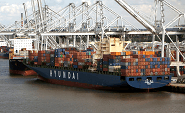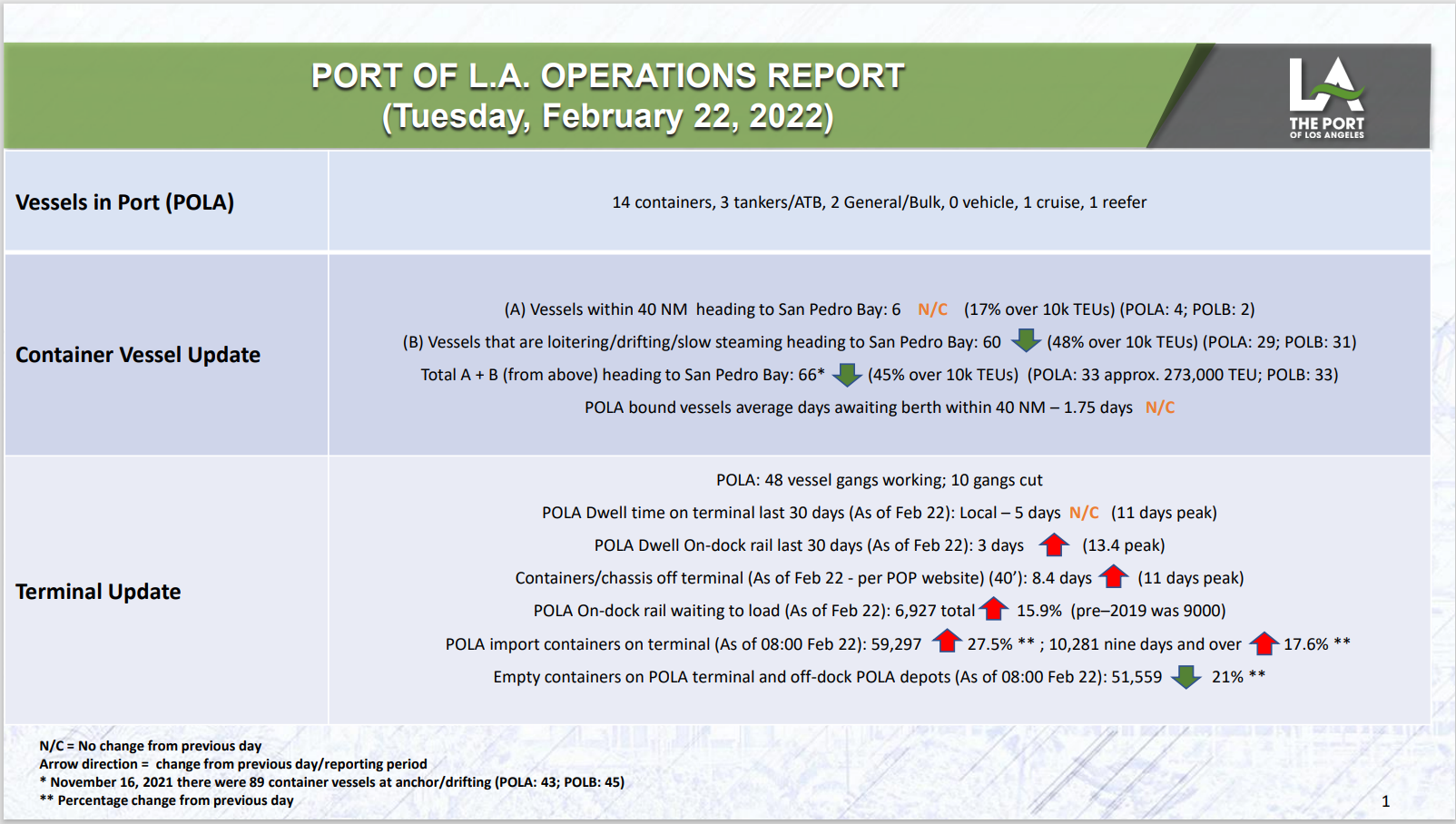Shipping and Logistics

Logjam of Container Ships Easing at Port of Los Angeles
Written by Tim Triplett
February 22, 2022
The Port of Los Angeles reported its busiest January ever, and data from port operations suggests the backup of container ships off the coast may be easing.
The port processed 865,595 Twenty-Foot Equivalent Units (TEUs) in January, a 3.6% increase compared to last year. It was the highest volume in the port’s 115-year history and a new milestone for a Western Hemisphere port.
“Many of the key data points that track the number of containers moving off our docks – and how quickly they depart – have improved significantly in recent weeks,” Port of Los Angeles Executive Director Gene Seroka said. “Our record-breaking January reflects the great efforts of our longshore workers, truckers and terminal operators as we continue to focus on additional operational efficiencies in the months ahead.”
January 2022 loaded imports reached 427,208 TEUs compared to the previous year, a slight decline of 2.4%. Loaded exports came in at 100,185 TEUs, a 16% decrease compared to the same period last year. Exports have now declined 35 of the last 39 months in Los Angeles. Empty containers climbed to 338,202 TEUs, a jump of 21.4% compared to last year due to the continued heavy demand in Asia.
As North America’s busiest port, the Port of Los Angeles has received a lot of negative publicity over the supply-chain bottlenecks caused by the pandemic, as scores of ships from Asia and other parts of the world have stacked up offshore waiting for a place to unload. While port operations still have a long way to go before they return to normal, the latest operations report as of Feb. 22 showed 66 container vessels loitering off San Pedro Bay, an improvement from a count of 89 three months ago (see chart).

To make room for arriving containers, the Port of Los Angeles and the Port of Long Beach had threatened to charge ocean carriers “container dwell fees” of $100 per container, increasing by $100 per day, for any container left at the terminal for more than nine days. But as of this week, the fines had been put on hold.
The two San Pedro Bay ports have seen a combined decline of 71% in aging cargo on the docks since the program was announced on Oct. 25. The policy was developed in coordination with the Biden administration and the U.S. Department of Transportation to force some action and help relieve the shipping logjam that is hurting the economy.
By Tim Triplett, Tim@SteelMarketUpdate.com

Tim Triplett
Read more from Tim TriplettLatest in Shipping and Logistics

US Great Lakes iron ore cargoes down notably through May
The Lake Carriers' Association reported a considerable decline in monthly iron ore shipments from US ports on the Great Lakes.

Wittbecker: West Coast port congestion
What's going on in West Coast ports?

Wittbecker: Mexico invests in port capacity despite US tariff troubles
The Mexican government aims to transform Manzanillo into the largest seaport in Latin America, capable of processing some 10 million TEU (20-foot equivalent units) per year by 2030. It is already Mexico's largest port and the third largest in Latin America, handling nearly 4 million 20-foot containers in 2024.

Wittbecker on Aluminum: When do the tariffs reach Main Street?
Containers sailing from China in April are down 15%-20% and Hapag Lloyd says their future bookings transpacific are down 30%.

Wittbecker on Aluminum: US-China trade war clobbers cross-Pacific trade
Container shipping lines have sharply increased blank sailings on Transpacific routes in response to escalating trade tensions between the US and China.
